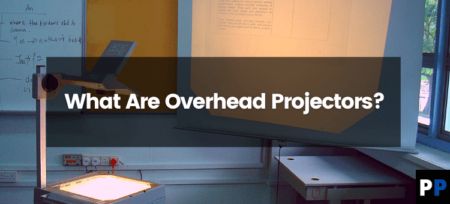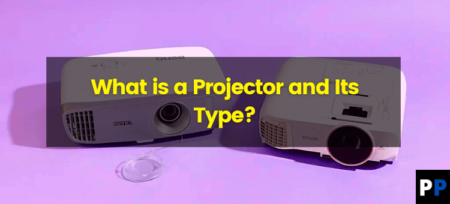Projectors have become an increasingly popular tool in the classroom, as they provide teachers with a powerful and versatile way to present information to their students. With a projector, a teacher can display text, images, videos, and other types of multimedia in a way that is both engaging and interactive. In this blog post, we will explore how projectors can help in teaching and how teachers can take advantage of this technology to enhance the learning experience for their students.
One of the main advantages of using a projector in the classroom is that it allows teachers to display large amounts of information on a screen. This can be particularly useful when teaching subjects such as science or math, where concepts can be complex and difficult to explain with just a blackboard or whiteboard. With a projector, a teacher can display detailed diagrams, animations, and videos that can help to clarify and reinforce the material being taught.
Additionally, projectors can also be used to create interactive and engaging lessons. With the use of an interactive whiteboard or digital pen, teachers can create interactive diagrams, charts, and maps that can be used to explain complex concepts and encourage student participation. Furthermore, teachers can also use interactive apps and games to make learning fun and engaging for students.
Projectors can also be used to create a more immersive learning environment. For example, when teaching about a historical event or place, a teacher can use a projector to display images and videos of the location, giving students a sense of what it would have been like to be there. Additionally, projectors can be used to display 3D models, animations, and simulations, allowing students to see and interact with concepts in a way that would not be possible with traditional teaching methods.
Another key advantage of using a projector in the classroom is that it allows teachers to easily share and display digital materials such as documents, presentations, and videos. This can be particularly useful in a blended learning environment where students are expected to access and review digital materials outside of the classroom. Additionally, the use of cloud-based software and apps such as Google Classroom and Microsoft Teams can allow teachers to share and collaborate on documents and materials in real-time with students.
In conclusion, projectors can be an extremely powerful and versatile tool for teachers. They can help to clarify complex concepts, create interactive and engaging lessons, and create a more immersive learning environment. Additionally, projectors can also be used to share and display digital materials, allowing teachers to create a more blended and collaborative learning environment. With the right setup and approach, projectors can help to enhance the learning experience for students and make teaching more effective and efficient.
Importance of LCD projector in education
LCD (liquid crystal display) projectors are an important tool in education because of their ability to display high-quality images and videos, making it easier for teachers to present information and for students to understand and retain the material being taught.
One of the main advantages of LCD projectors is that they have a high resolution, which allows them to display clear and crisp images and videos. This is particularly important in subjects such as science and math, where detailed diagrams and animations can help to clarify complex concepts. Additionally, LCD projectors also have a wide color gamut, which means they can display a wide range of colors, making images and videos more vibrant and lifelike.
Another advantage of LCD projectors is that they have a high contrast ratio, which means they can display both bright and dark images with great accuracy. This is particularly important in subjects such as history and art, where images and videos of artworks or historical places can be displayed with great detail and accuracy.
LCD projectors are also known for their energy efficiency, which helps to lower the cost of operating the projector and reduces the environmental impact. They also have a longer lifespan than other types of projectors, which reduces the need for frequent replacement and maintenance.
Moreover, LCD projectors are compatible with a variety of devices such as computers, tablets, and smartphones, allowing teachers to easily connect and display digital materials in the classroom. This is particularly useful for creating a blended learning environment where students can access and review digital materials outside of the classroom.
In conclusion, LCD projectors are an important tool in education because of their ability to display high-quality images and videos, which helps to clarify complex concepts and make the learning experience more engaging and interactive. They are also energy efficient, have a long lifespan and are compatible with a wide range of devices, making them a cost-effective and versatile solution for the classroom.
Disadvantages of projectors in teaching
While projectors can be a powerful and versatile tool in teaching, they do come with some disadvantages that should be considered.
One major disadvantage of using projectors in the classroom is that they can be a distraction for some students. Projectors can be bright and can emit a lot of light, which can be distracting for students who are sensitive to light or have difficulty focusing. Additionally, students may also be easily distracted by the moving images and animations that are displayed on the screen, which can make it difficult for them to stay engaged with the material being taught.
Another disadvantage of projectors is that they can be costly to purchase and maintain. Projectors can be expensive, especially if they are high-end models that have advanced features such as high resolution and high contrast ratio. Additionally, projectors require regular maintenance, such as cleaning the lens, replacing the bulb and keeping the projector cool, which can add to the overall cost of owning a projector.
Additionally, projectors are dependent on electricity, which can be a problem if power outages occur. This can disrupt the class and make it difficult for the teacher to continue the lesson.
Furthermore, projectors may not be suitable for all types of classrooms. For example, a classroom with a lot of natural light may not be an ideal setting for a projector, as the ambient light can cause glare on the screen and make it difficult to see the images being projected. In such scenarios, it may be better to use other teaching tools such as whiteboards or traditional chalkboards.
Lastly, not all teachers may be comfortable using a projector and may need to invest time and effort to learn how to use the technology effectively in their classes. Some teachers may require additional training to learn how to use the various features of the projector and how to connect it to different devices.
Conclusion
In conclusion, while projectors can be a powerful and versatile tool in teaching, they do come with some disadvantages such as distraction, high cost, dependence on electricity, not being suitable in all classrooms, and may require additional training for teachers. These factors should be considered when deciding whether to use a projector in the classroom and how to use it effectively.













